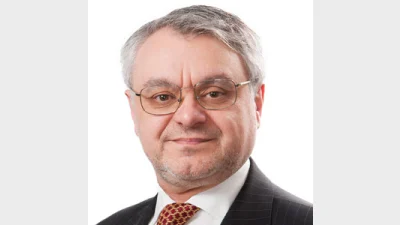A checklist for advisers taking on clients with SMSFs



AMP’s Philip La Greca provides a checklist for taking on an existing SMSF client.
With the Australian Prudential Regulation Authority listing the existence of over 500,000 self-managed super funds (SMSFs) at 31 March 2013, an increasing number of advisers are likely to face the prospect of new clients who have existing SMSFs.
In these cases, what documents do you need to look for to judge how well the SMSF is running, as well as what strategies can be implemented for these clients?
This material can be divided into three main categories: statutory documents, financial statements and returns, and other administrative information. Below we consider the specifics of these categories in more detail.
Statutory documents
The first document in this category is the SMSF’s trust deed. This should be properly executed (signed and dated by the correct parties) and be the most current version.
It may be necessary to also check to see if it is an update to the original trust deed and, if so, that it has been put in place correctly. The content and currency of the trust deed drafting will determine what strategies may be used in the SMSF.
The obvious areas to examine are death benefits and nominations, the range of benefit conditions of releases permitted and the capacity to borrow.
While the trust deed will have been executed by the trustees at the time it was signed, it may not reflect the current trustees.
It’s therefore important to check for current consents to act as trustees, declarations of non-disqualification and the Australian Tax Office (ATO) trustee declarations to verify the current parties.
The safekeeping of these documents and the ability to locate them is a statutory requirement. Attempting to locate these documents will also indicate how well recordkeeping is being handled.
Generally, information about the fund’s members is not contained within the trust deed and verifying them can be done in a variety of methods.
Most SMSFs will have member applications and death benefit nominations. These documents will also include Tax File Number collection as well as indication of how death benefits are to be handled.
It is worth checking that the form of the nomination is in accordance with those allowed in the trust deed.
The final statutory document to be reviewed is the written investment strategy. A strategy document with quantifiable and measurable details will enable the adviser to determine if the SMSF is invested in the targeted asset classes and attaining the expected performance outcomes.
These documents will help you obtain an understanding of the framework used for this particular SMSF, and then enable you to consider if elements should be reviewed.
Financial statements and returns
The next step is to examine the financial aspects of the SMSF, and this will start with the latest audited financial statements.
This will tell you how much money is in the SMSF, the type of assets held, and the level of investment income generated, as well as aggregate contribution and benefit payment information.
A copy of the annual regulatory return is important, as this includes an independent snapshot of the SMSF against a variety of SIS compliance measures and allows the adviser to take a degree of comfort in terms of previous activities of the SMSF.
This will also give the adviser an idea of how quickly the information can be obtained.
For personal financial planning, some of the key information is contained in the annual member benefit statements.
From these statements an adviser will be able to determine the mix of pension and accumulation accounts and the level and type of contributions made and benefits paid in respect of each member.
Other administrative information
Unfortunately not everything is contained in the above documents, so other sources of information may be needed.
While the member statements contain information about each pension being paid, depending on how the SMSF has been administered, not all relevant material will be disclosed there.
Sometimes the original pension commencement documents will be needed to find out aspects such as the tax-free proportion, if the pension is reversionary, and who is to receive the death benefit.
One aspect to check is that the assets are all correctly registered in the name of the trustees of the SMSF.
This is now an operating standard, and this means that a penalty could apply if the wrong names are listed. Verifying titles on holding statements and other investment ownership documents will assist this process.
While the financial statements will incorporate the current assets and the market values, additional investment transaction history information will be needed to assist in capital gains tax calculations, particularly if part of the adviser recommendation results in the disposal of assets.
If the SMSF has undertaken a Limited Recourse Borrowing Arrangement, then it would be essential to check the contract of sale, bare trust, loan agreement and title documents to ensure the correct dates and parties are in place.
From all this information an adviser will be better able to determine the suitability of the SMSF, what scope there may be for more advanced strategies, and where there may be sensitivities and potential compliance concerns.
Even the ease or difficulty in obtaining these documents and material will give the adviser an indication of the degree of administrative assistance that will be needed in respect of each SMSF.
Philip La Greca is AMP SMSF administration head of technical services.
Recommended for you
The winners have been announced for the 2025 Super Fund of the Year Awards, held in Melbourne on 26 November by Money Management's sister brand Super Review.
Data and technology provider Novigi has acquired Iress’ superannuation consulting and managed services business from Apex Group.
AMP is to launch a digital advice service to provide retirement advice to members of its AMP Super Fund, in partnership with Bravura Solutions.
Unveiling its performance for the calendar year 2024, AMP has noted a “careful” investment in bitcoin futures proved beneficial for its superannuation members.









